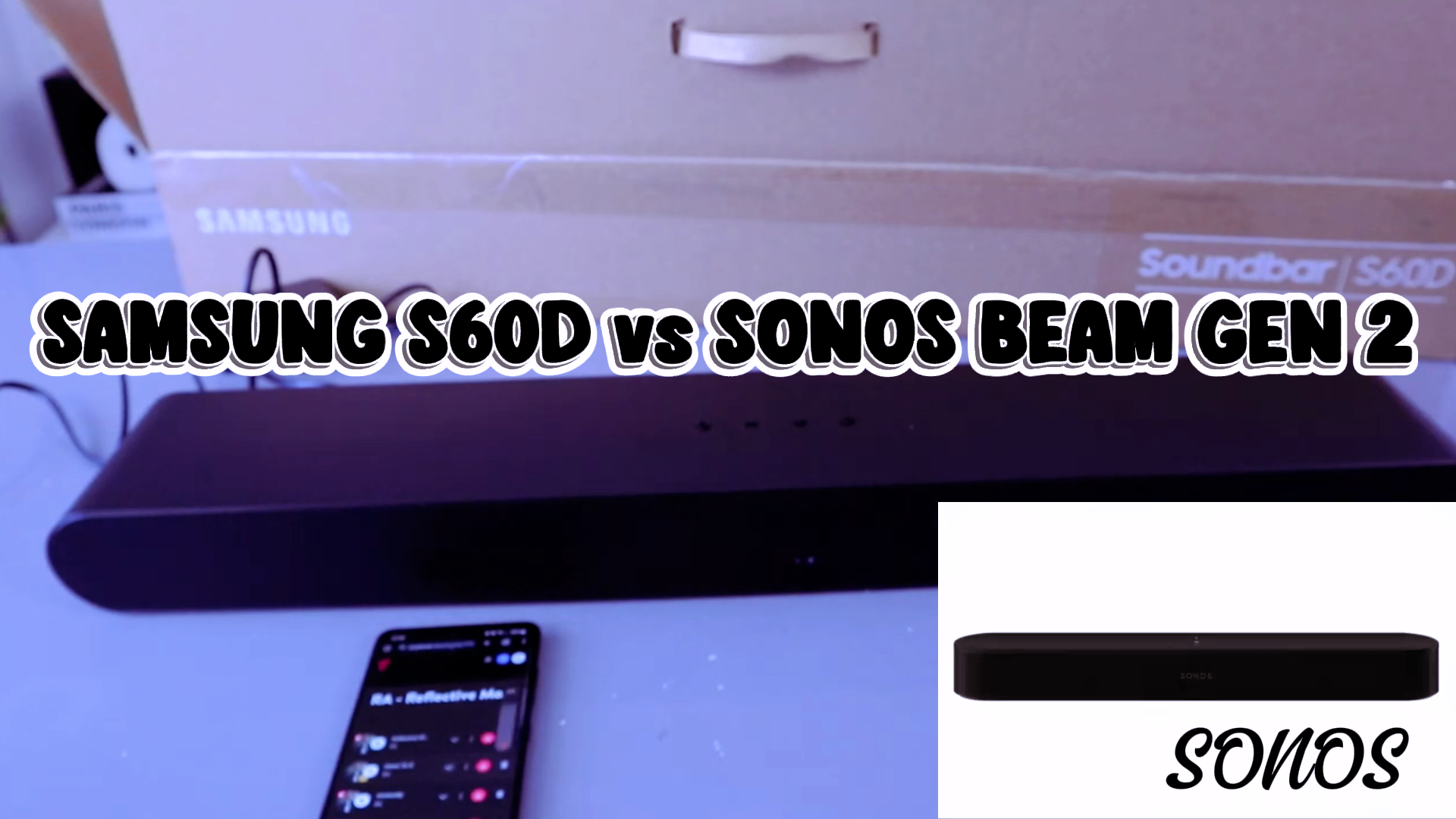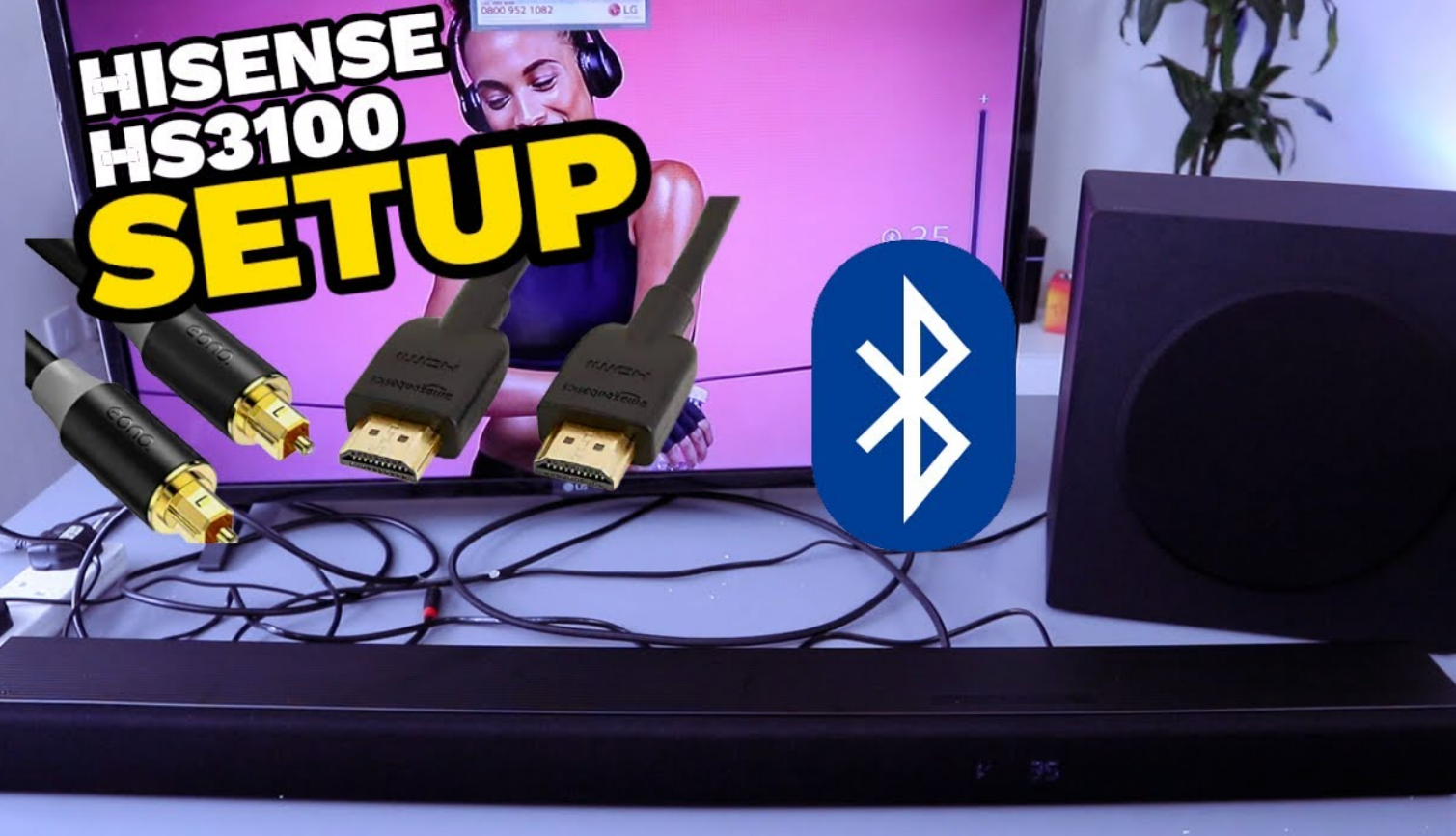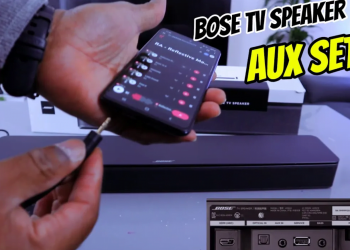As an Amazon Associate, I earn from qualifying purchases.
Welcome back to the channel, everyone! I’m thrilled to have you here as we dive into another exciting tech comparison. A huge shoutout to one of our awesome viewers who dropped a fantastic question on my YouTube channel, asking how the Samsung HW-S60D Soundbar compares to the Sonos Beam (Gen 2). These two compact soundbars both pack a punch with Dolby Atmos support, making them perfect for upgrading your home theatre in small to medium-sized rooms. In this blog post, I’ll break down their differences in design, sound quality, features, and connectivity to help you pick the best one for your setup. Let’s get started!
The Samsung HW-S60D and Sonos Beam (Gen 2) are 5.0-channel, all-in-one soundbars designed to deliver immersive audio without the need for extra speakers or a subwoofer. Both are compact, support Dolby Atmos for a three-dimensional sound experience, and are great for enhancing your TV’s audio. To find out which one suits your needs, let’s explore how they stack up in terms of design, sound performance, features, connectivity, and overall value.
Starting with design and build quality, the Samsung HW-S60D measures 26.4 inches wide, 2.4 inches high, and 4.1 inches deep, weighing 6.6 pounds. Its sleek, modern design features a metal grille and fabric covering, which blends seamlessly with contemporary decor, though the fabric may attract some dust. It’s wall-mountable with included brackets for flexible placement and comes in black as the HW-S60D or white as the HW-S61D. The Sonos Beam (Gen 2) is slightly more compact at 25.6 inches wide, 2.6 inches high, and 4.0 inches deep, weighing 6.2 pounds. Its premium, minimalist look includes a polycarbonate grille and touch-sensitive controls, giving it a clean, high-end appearance. It’s also wall-mountable, but brackets aren’t included, and it’s available in black or white. While the Sonos Beam feels a touch more premium in build quality, the Samsung’s included mounting brackets and modern aesthetic make it a practical choice for wall setups.
When it comes to sound quality, both soundbars deliver impressive audio for their size, but their sound profiles cater to different preferences. The Samsung HW-S60D offers a wide soundstage with clear dialogue, thanks to its dedicated centre channel and side-firing drivers. Its Space Fit Sound Pro technology optimizes audio based on your room’s acoustics, ensuring consistent performance no matter where you place it. The built-in woofers provide decent bass for casual listening, though it lacks the deep low-end of a subwoofer setup, which might limit its impact for bass-heavy content like action movies. It supports wireless Dolby Atmos when paired with compatible 2022-2024 Samsung TVs, creating a three-dimensional sound experience, though it doesn’t have up-firing drivers for true height effects. The Active Voice Analyzer enhances dialogue clarity, making voices stand out even in noisy scenes, which is ideal for TV shows and movies.
The Sonos Beam (Gen 2) is known for a wider, more immersive soundstage, especially with Dolby Atmos and Dolby Digital content, where sound effects feel like they extend around your listening area. Like the Samsung, it relies on built-in woofers for bass, offering a balanced sound profile suitable for both music and movies, but it also misses the deep low-end of a subwoofer. Its Dolby Atmos support via eARC delivers a slightly more pronounced three-dimensional effect compared to the Samsung, though it’s still limited without up-firing drivers. The Beam excels in dialogue clarity, making it a great choice for content with heavy vocals, such as dramas or talk shows. Overall, the Sonos Beam offers a more immersive soundstage for movies and music, while the Samsung HW-S60D shines for dialogue clarity and room-optimized audio, making it versatile for mixed usage.
Moving on to features and connectivity, the Samsung HW-S60D comes loaded with options. It includes Q-Symphony for seamless audio syncing with compatible Samsung TVs from 2020 to 2024, Game Mode Pro for enhanced gaming audio, and Adaptive Sound to optimize audio based on the content you’re watching. For connectivity, it offers Wi-Fi, Bluetooth, HDMI eARC, an optical input, and Chromecast built-in, along with AirPlay 2 and Tap Sound for easy smartphone pairing. Built-in Alexa and Google Assistant provide voice control and smart home integration, and the SmartThings app allows for seamless control and streaming. The Sonos Beam (Gen 2) offers Trueplay room correction, though it’s only available for iOS devices, along with dialogue enhancement and auto-volume/night mode for consistent audio levels. Its connectivity includes Wi-Fi, HDMI eARC, an Ethernet port, and AirPlay 2, but it lacks Bluetooth and Chromecast, which limits wireless streaming options compared to the Samsung. It also supports Alexa and Google Assistant for voice control but not Siri, and it integrates seamlessly with the Sonos ecosystem, making it ideal for those with other Sonos speakers for multi-room audio. The Samsung HW-S60D has an advantage with its broader connectivity options and feature set, especially for Samsung TV owners, while the Sonos Beam is the better choice for those in the Sonos ecosystem.
Customer feedback reflects the strengths of both soundbars. The Samsung HW-S60D is highly praised for its sound quality, ease of use, and compact size, with users on platforms like Best Buy giving it a 4.5 out of 5 rating from over 250 reviews. Many appreciate its clear dialogue and compatibility with Samsung TVs, though some note the bass could be deeper. The Sonos Beam (Gen 2) is lauded for its immersive sound and sleek design, with users on Amazon highlighting its superior soundstage. However, some feel its feature set is less versatile compared to competitors with broader connectivity.
So, which soundbar is right for you? The Samsung HW-S60D is the better choice if you own a Samsung TV from 2020 to 2024, as its Q-Symphony and wireless Dolby Atmos integration create a cohesive experience. It’s also ideal if you want Bluetooth and Chromecast for versatile streaming, or if you value included mounting brackets and a feature-rich design. The Sonos Beam (Gen 2) is the way to go if you’re invested in the Sonos ecosystem for multi-room audio, prioritize a wider soundstage and premium build quality, or prefer AirPlay 2 and don’t need Bluetooth or Chromecast. Both are excellent options, but your decision will depend on your existing setup and streaming preferences.
Ready to take your audio to the next level? You can find the Samsung HW-S60D and Sonos Beam (Gen 2) on Amazon. Check the latest pricing here:
Samsung HW-S60D Soundbar: https://geni.us/cpdI4 (Amazon)
Sonos Beam (Gen 2) Soundbar: https://geni.us/B6oFEKL (Amazon)
Note: As an Amazon Associate, I earn from qualifying purchases.
To wrap things up, the Samsung HW-S60D and Sonos Beam (Gen 2) are both fantastic compact soundbars with unique strengths. The Samsung offers versatile connectivity and seamless integration with Samsung TVs, while the Sonos Beam delivers a premium soundstage and ecosystem compatibility. Let me know in the comments which one you’re leaning toward or if you have other soundbar questions! Don’t forget to like, subscribe, and hit the bell icon on my YouTube channel for more tech reviews and comparisons. Thanks for joining me today!







